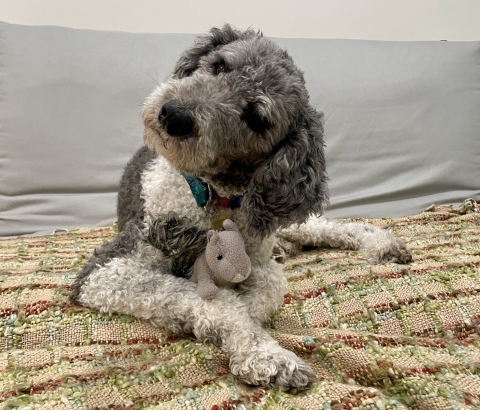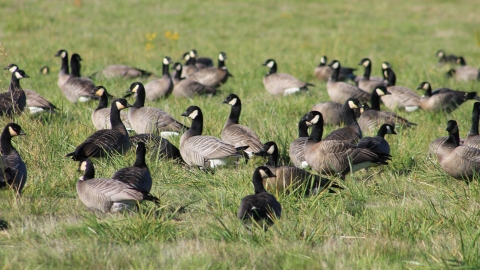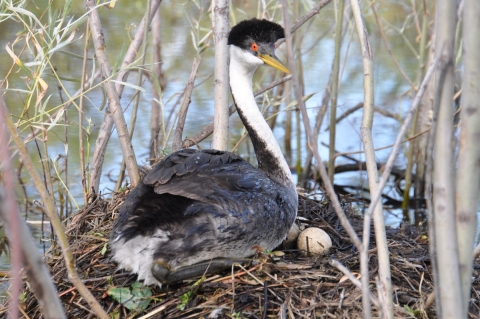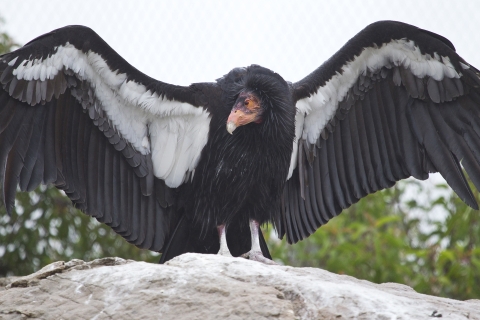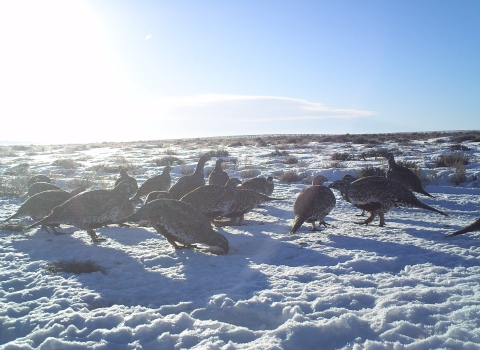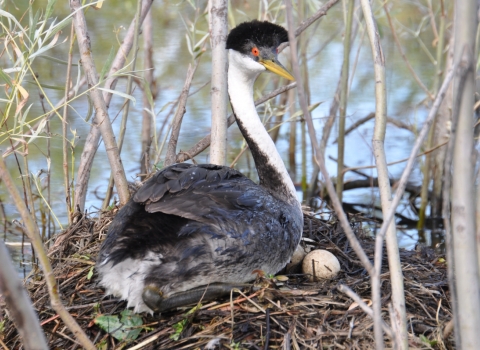My standard poodle, Angel, has a lot of questions about birds.
She mostly wants to know what they are and why they won’t play with her. I think she also wants to know what they taste like, and if it’s anything like the chicken she steals from my kitchen counter.
“True or false?” she asks with her eyes. “Do they all taste like chicken?”
Perhaps. I won’t commit one way or the other, otherwise I might eat crow.
In the meantime, below are some of Angel’s questions I can answer, true-or-false style. Do bird farts smell bad? Are red-eyed birds evil? Read on to find out.
Mallards sleep with one eye open
Move over, Chuck Norris: mallards don’t sleep. They wait.
Mallards sometimes sleep with one eye open, a phenomenon known as unihemispheric sleeping. This evolutionary trait developed to help animals rest while still remaining aware of their environment. This half-slumber ability allows mallards (and other duck species!) sleeping at the outside edge of a flock – or more poetically known as a sord — to act as sentries.
Mallards are the most abundant duck species in North America. With their emerald-green heads and classic quacks, these iconic birds can be found at many of the U.S. Fish and Wildlife Service’s National Wildlife Refuges.
Bird flatulence is the worst in the animal kingdom
Nope, that’s a lie. Birds actually don’t fart at all.
According to the book “Does It Fart: The Definitive Field Guide to Animal Flatulence,” birds don’t have the necessary gas-producing gut bacteria that other farting animals do.
They also digest food quickly, which doesn’t leave enough time for toots to precede the poops. The authors do discuss one potential documented instance of a blue jay fart, but sadly conclude, “unfortunately, this was likely just warmer water vapor from feces meeting the cooler air and producing the visible gas.”
I am convinced, however, that Angel pops out the worst farts in the animal kingdom.
A group of geese is called a gander
False. A gander is not a group of geese; it’s a male goose. It’s also a sly glance, as in, “take a gander at that gander—is it really doing THAT on your lawn?”
Bird nerds have some super fun words to describe avian gatherings: a group of geese is a gaggle, a group of finches is a trembling, and a group of chickens is a peep. There’s also assemblage vocab that feels right at home in government: A group of crows can be called a congress (or even more thrillingly, a murder), a group of gulls is a colony, a group of eagles is a convocation, and a group of owls is a parliament.
Birds with red eyes are evil
Bruh. Really? Birds with red eyes are amazing! For example, if you were to visit Deer Flat National Wildlife Refuge in Nampa, Idaho, you’d see red-eyed western grebes congregating around Lake Lowell.
Western grebes spend almost all their time in the water, feeding, dancing, and weaving nests. Totally wholesome. I bet red-eyed birds would even impress your parents.
Birds possess a surprising diversity in eye color: bright orange, deep scarlet, brown, greens, blues, and reds. Some birds, like rock pigeons, even have multicolored eyes. Scientists believe that evolutionary pressures for survival and mating have been the driver for the diversity in avian eye color. No colored lenses needed!
Owls can rotate their heads in a complete circle
Not true. But owls can rotate their heads approximately 270 degrees – three-quarters of a complete circle. While owls may not have eyes in the backs of their heads, they CAN look over both shoulders at the same time. Brutal!
The Pacific Northwest is home to more than a dozen species of owls, including western screech-owls, great horned owls, flammulated owls, and long-eared and short-eared owls. The northern spotted owl, at one time one of the more common owls in the region, is listed under the Endangered Species Act and in danger of going extinct. While competition from the invasive barred owl is considered one of the greatest threats to the northern spotted owl, habitat loss has also had a significant impact on northern spotted owl populations.
Sage-grouse eat dirt
True! Greater sage-grouse are weird in the coolest ways: They only mate in certain spots called leks, males make popping sounds with air sacs to attract females, and they have extra brawny stomachs to help them digest the tough sagebrush sagebrush
The western United States’ sagebrush country encompasses over 175 million acres of public and private lands. The sagebrush landscape provides many benefits to our rural economies and communities, and it serves as crucial habitat for a diversity of wildlife, including the iconic greater sage-grouse and over 350 other species.
Learn more about sagebrush that’s a staple of their diet.
Sage-grouse also eat dirt, a practice that’s officially known as geophagy. Other bird species such as pigeons and parrots eat dirt, and mammals such as bats and chimpanzees also munch on soil sometimes. Scientists are still exploring the reasons behind the practice but speculate that minerals in the soil might help with breeding, digestion, or supplement their diets.
Bald eagles have terrible eyesight
Psssh. Are you kidding? Bald eagles have amazing eyesight! Whereas 20/20 vision is considered excellent for humans, the average bald eagle has 20/5 vision.
In practical terms, this means that they can spot small prey up to 2 miles away while soaring in the air and expending at least a little bit of energy to look aristocratic.
Bald eagles are one America’s greatest conservation success stories. For decades, the Service has worked with partners and members of the public to preserve and restore eagle habitat. The Bald and Golden Eagle Protection Act and the Endangered Species Act provide legislative protection for these majestic birds and have helped ensure populations remain robust. Go team!
California condors are the largest land bird in North America
Totally true. Weighing up to 25 pounds with wingspans of 9.5 feet, a condor is about the size of a 2-year-old child with the feathered arms of an NBA All-Star.
With a bald head and neck, black feathers, and a taste for carrion, these birds are one of the most recognizable in the world. Listed as endangered in 1967, the Service has been working with partners in support of captive breeding programs to restore populations in the wild.
Condors are just extra, as the kids say these days. Let’s keep ’em around.


